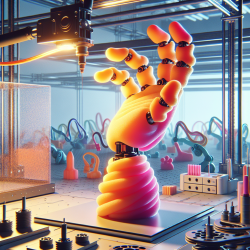Introduction to the GummiArm Project
The GummiArm Project represents a significant leap forward in the field of robotics, particularly in Embodied AI. This innovative project focuses on creating a replicable, variable-stiffness robot arm that is not only cost-effective but also highly adaptable for various research and practical applications. By leveraging the principles of soft robotics and 3D printing, the GummiArm offers a unique platform for experiments in robotics that were previously challenging to conduct.
Why Soft Robotics Matter
Traditional robotics often struggle with the rigidity of their designs, which can limit their ability to safely interact with the environment. The GummiArm addresses this issue by incorporating soft, variable-stiffness actuators that mimic the flexibility and resilience found in biological systems. This approach not only enhances the safety of robotic interactions but also opens up new avenues for research in fields like Embodied AI, where the physical interaction of robots with their environment is crucial.
Key Features of the GummiArm
- 3D-Printable Design: The GummiArm's structure can be printed on hobby-grade 3D printers, making it accessible and easy to replicate.
- Variable-Stiffness Actuators: These actuators allow the arm to adjust its stiffness dynamically, enabling safe and efficient manipulation tasks.
- Cost-Effective: With a material cost of under $6000, the GummiArm is an affordable option for research institutions and developers.
Applications and Impact
The GummiArm has been utilized in a variety of experiments and applications, from developmental robotics to agricultural automation. Its ability to perform complex tasks with a high degree of safety and adaptability makes it an invaluable tool for researchers and practitioners alike. By enabling the concurrent development of robotic "brains" and "bodies," the GummiArm fosters a more integrated approach to robotics design and experimentation.
Encouraging Further Research
For practitioners looking to enhance their skills or explore new research opportunities, the GummiArm provides a versatile and open-source platform. Its design encourages experimentation and iteration, allowing users to refine and expand their robotic applications. By engaging with the GummiArm community, researchers can contribute to the ongoing development of this innovative technology and explore its potential in various fields.
Conclusion
The GummiArm Project exemplifies the potential of soft robotics and Embodied AI to transform the way we approach robotic design and application. By providing a replicable, cost-effective, and adaptable platform, the GummiArm empowers researchers and practitioners to push the boundaries of what is possible in robotics. To read the original research paper, please follow this link: The GummiArm Project: A Replicable and Variable-Stiffness Robot Arm for Experiments on Embodied AI.










